This article is a meeting place of a number of ships passing in the night. Firstly, there is an interest in Georgian wines as a country of history and tradition, which is the most authentic representative of the Ancient World of winemaking. In the corridors of the wine intelligentsia abroad, Georgia has stolen a march on Israel. It is more exotic, more ancient and paradoxically also newer and more unfamiliar.
Then there is the new trend for so-called “orange,” or, more accurately, amber wines. These are wines where the skins and pips, usually discarded for clean, fresh white wines made in the modern style, are used in a similar way to a red wine. An ancient way of winemaking revived and is becoming a new trend in modern times. This mingles with the new interest in natural wines. When I first came across Lebanon’s Chateau Musar in the 1980s, I appreciated the different attitude. Now it has become a movement.
They all came together when I met Natalie Shafrir, the person who has unlocked the door to natural wines, Georgian wines and orange wines in Israel. I met her recently. She is naturally friendly and open, and speaks with a hoarse voice, as though she was at a rock concert the night before. She was born in 1989 in Toronto, immigrated to Israel at age five and was brought up in Tel Aviv. She studied gastronomy science at the University of Slow Food in northern Italy.
Slow Food was really the beginning of the back to nature movement, inspired by a loathing of McDonald’s. Its founder was the charismatic Carlo Petrini. We met once. He was then a big man but not tall, with a wide generous smile and great warmth: A vinous Pavarotti. I did not speak Italian and he did not speak English. There was a lot of wild arm waving, beaming smiles and laughter. Although we did not understand a word each was saying, we understood each other perfectly.
Shafrir has left her mark with the articles she has written on food, food culture and wine both in Israel and abroad. These articles show the persistence and passion of a truffle sniffer. She is fascinated about anything that occurs around the table and manages to get below the surface of the usual bland text, to write about the sensory and social side of the culinary meeting. She succeeds in connecting the grower, local agriculture and the producer, with the culture of the dining table and the habits of the consumer. With constant references to traditions and folklore, she is able to relay the smells and nuances that most food writers just don’t sense. It is a rare talent.
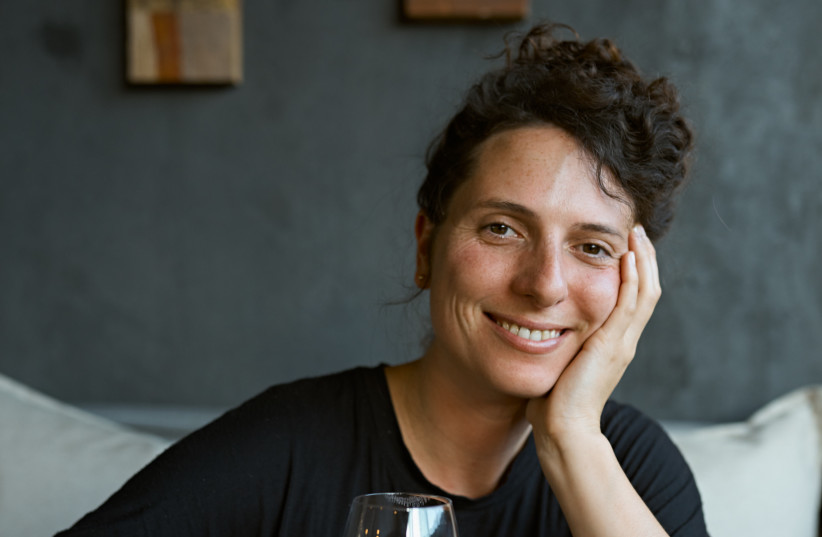
After her degree, she went to Georgia and fell in love with the world’s oldest wine producer and their unique wine culture. She lived in a winery and became enchanted with the farmers and craftsmen who made wines in their own image. The industrial word “manufacturer” hid a whole world of individualism, character and authenticity, which she found captivating and enchanting.
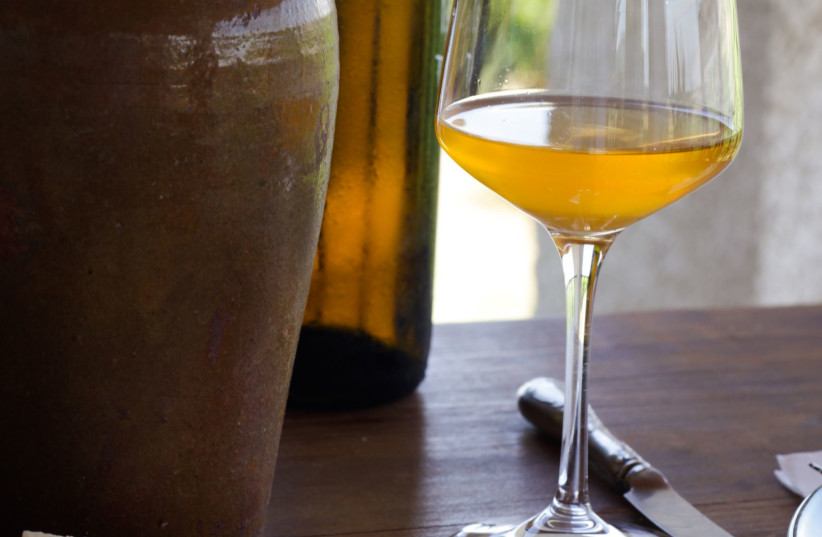
ON HER return, she founded her own wine import company called Asis Wines, with hand-picked gems from Italy, Georgia and Austria, along with Harashim Winery from Israel. For most buyers, business is what dictates. Shafrir has a different approach. She really gets to know the producer and has to feel a close kinship; only then will she make the deal. It is all personal; a relationship first and business after.
She takes on the work of the buyer, importer, marketer, distributor, payment collector and this includes all the risk from A to Z. Nothing is certain in the wine trade. There is bureaucracy, some unscrupulous customers and the wine trade is fraught with pitfalls, especially with natural wines, which will not forgive you for not looking after them.
When Shafrir learned that I did not immediately taste the wines she sent me, she admonished me to “keep them chilled” like a Polish mother telling her 40-year-old son to wear a coat when he went out. The wines are an extension of her and she could not bear that they would not be treated right, in case they did not show at their best.
The paradox is that we have been programmed to search for wine faults to illustrate how much we understand about wine. Globalization has meant standardization. The wonderful old, nutty oxidized whites that used to be made in Spain have been replaced by clean, fresh fruity Euro-style blends that are nice enough, but characterless and homeless. They could come from anywhere.
Now changes are afoot, even in Israel. You only have to look at vineyards today and compare them with 20 years ago. People are starting to think about sustainability and wineries are starting to indulge in more compassionate wine growing. Words like wild, raw, authentic are used interchangeably with natural, to indicate minimum intervention winemaking. It is creating more interest and curiosity than ever, especially as care for the environment is on everyone’s lips these days.
Georgia is where this began. Domestic winemaking meant treading on the grapes in a hollowed trough of wood. Fermentation and aging would take place in large pottery jars called qvevri, which were buried in the ground for coolness. The qvevri would be opened in the spring and the wine would then be drunk through the year by family and friends until the next years stash became available. Simple, local, authentic but they are in no way commercial.
In the meantime, a modern Georgian wine industry developed, providing volume and inexpensive wines to the Soviet Union and then Russia. Semi dry reds and cheapness were the calling cards. In 2006, Russia – after a brief war with Georgia – banned Georgian wine.
The Georgian wine community was forced to reevaluate and take stock. One of the results was the revival of the traditional way of winemaking. At the same time, pioneers in Friuli-Venezia Giulia and Slovenia revived their own history of natural winemaking, gaining inspiration from the mother country, Georgia. A movement virtually extinct was revived.
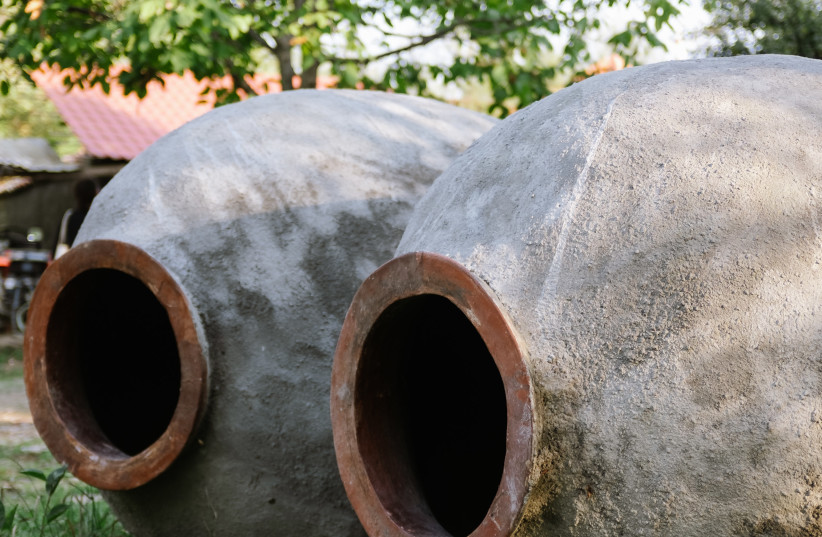
THE MARKET for these wines is for those who love the wines of Georgia, believe in natural wines or are simply curious to taste something new. The regular wine drinker programmed from the cradle in a certain way will say in a parrot fashion that the wines are faulty or off. The wine geek will love them. Funnily enough, in my experience the wine beginner also loves them. They are not sour like white wines or astringent like reds, and they match a wide range of food.
Georgia’s most well-known grape variety is the Saperavi, a red variety, but their most famous and unique wines are their whites, often made from Rkatsiteli, especially in the Kakheti region, in the southeast. To learn more, I heartily recommend the following books, which I have enjoyed and learned from recently: The Wines of Georgia by Lisa Granik, MW, For The Love of Wine by Alice Feiring and Amber Revolution by Simon J. Woolf.
These are the wines I tasted and I was very pleasantly surprised. All are miniscule production, so vintages may well have changed. If they are unavailable, Asis Wines will be able to recommend others.
Pheasant’s Tears, Tsolikouri 2019. Pheasant’s Tears is the most famous of Georgia’s natural wineries. It is a wonderful joint venture between painter John Wurdeman and Gela Patalishvili. This is wine from the Tsolikouri grape variety produced in the region of Imereti, in the west of Georgia. The grapes were both fermented (with natural yeasts) and aged in qvevri for nine months. The skin contact was for only three weeks, so the result is nearer a regular wine than most in the category. It is yellow straw in color, slightly cloudy, with a nose of citrus, a mild herbaceous character and honeysuckle on the nose and a winey sour apple flavor, and an attractive bitterness on the finish. Only 11.5% alcohol. NIS 109
Gogo, Cuvée Bebes 2018. This is an orange wine. Deep amber in color. It comes from the Kakheti, the main wine region, and is made from the Rkatsiteli and Mtsvane varieties, fermented and aged with the skins for eight months. The wine is mouth filling, full bodied with very complex aromas of dried fruit (mainly apricots.) It has tannin, but it is not harsh and this provides a contrast that refreshes. Ketevan (Keti) Berishvili is a winemaker’s daughter. She made her first wine in 2015 and calls it gogo, meaning girl, and she stands out in what is still very much a man’s world. NIS 198
Sheniani, Amber Stars Rkatsiteli 2018. An orange wine, made from Rkatsitelli grapes, fermented and aged with the skins for ten months. The wine is amber colored with a touch of gold. A full bodied wine, with smoky, grassy, herbal, nutty flavors mingled with dried fruit and tannin. All the wines we tasted gained immediate praise but this was a big wow. It took our breath away. The balance and depth of flavors made it interesting to drink on its own, but it would also match a wide selection of dishes, for which you would normally allocate red wines only. The Sheniani Winery is owned by a family who has made wine since the 1960s but they only decided to bottle it in 2017. NIS 129
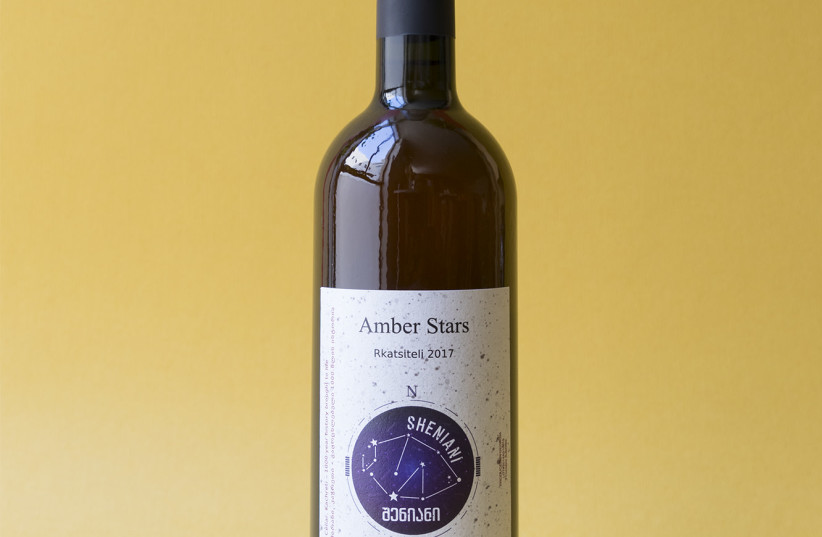
Pheasant’s Tears, Vardisperi Rkatsitelli 2019. This is a separate variety, probably a mutation of Rkatsitelli, with pink grapes. It is termed light red on the label, but looks in the glass like a rosé. It was macerated on its skins for three weeks and then spent nine months in the qvevri. The wine has red fruit aromas with floral notes, with a sour berry flavor and pomegranate juice-like acidity. It looks like a rosé, but it is a rosé with a difference. Full of flavor. NIS 129
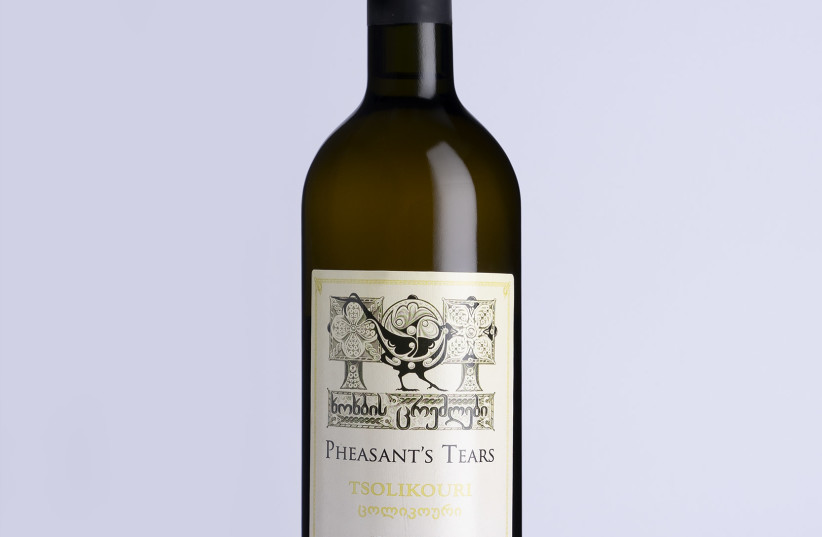
Many times I have tasted natural wines with unattractive stinky, funky aromas. When I comment, I am looked at with disdain and the refrain: “but what do you expect, it is natural!” No one has to like a wine because you ought to. Yet, none of these wines I tasted were rancid, over oxidized or weird. All were undoubtedly different, but amazing. This style of winemaking – though as old as wine itself – has only been revived in the last 20 years or so. Even in Georgia the return to tradition is very tenuous and should be supported. Asis Wines is playing its part. It is great after so many years in the wine trade to be able to continue one’s wine education by learning about something so new, which dates from the dawn of winemaking.
The writer is a wine industry insider turned wine writer, who has advanced Israeli wine for 35 years. He is referred to as the English voice of Israeli wines.
